What’s the first thing comes to your mind when we say Lonavala? Misty valleys and endless chai? Well, Lonavala is more than Just Chikki and Rain!
In this blog, we will take you trough some unique treks in Lonavala, that are , just waiting to be conquered. Forget the crowds and the clichés – let’s uncover the Lonavala you never knew existed. Ready to ditch the tourist trap and embrace the thrill?
Let’s climb!
Table of Contents
11 Unique Treks in Lonavala
1. Rajmachi Fort
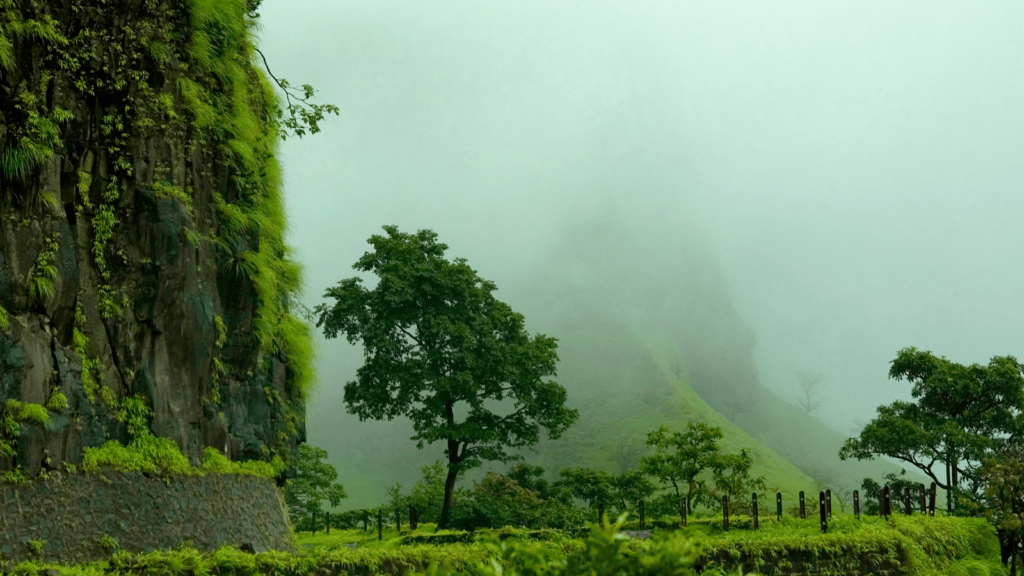
Rajmachi Fort is a captivating twin fortress nestled in the rugged Sahyadri Mountains. It is one of the popular treks in Lonavala. It comprises two distinct peaks, Shrivardhan and Manaranjan, each offering breathtaking views and a rich historical legacy.
Known for its challenging yet easy trek, Rajmachi attracts adventure enthusiasts from far and wide. The trek offers incredible landscapes of mountains, lush greenery and waterfalls in the surroundings.
The fort has witnessed the reigns of various dynasties, including the Marathas and the Mughals. Its strategic location made it a vital outpost in protecting the Western Ghats. Today, remnants of its glorious past, such as ancient caves and fortifications, are there to explore
Trek Difficulty: Easy (From Lonavala)
Trek Duration: 45 mins- 1hr
Opening hours: 24 hours
5.9 km Away from the center
Distance From Lonavala Railway Station: 17.6 km
2. Korigad Fort

Yet another easy and one of the greatest treks in Lonavala is Korigad Fort. Also known as Korlai Fort, is a majestic hill fort perched atop the Sahyadri Mountains near Lonavala, Maharashtra. It’s a popular destination for trekkers and history enthusiasts alike.
While the exact construction date is unknown, historical records suggest that Korigad Fort was built in the 17th century by the Adil Shahi dynasty. Its strategic location made it an important military outpost.
The fort played a significant role during the Maratha Empire. It was one of the forts surrendered to the British forces after the fall of the Maratha Empire in 1818. Despite its turbulent past, the fort has retained much of its original structure, offering a glimpse into its rich history.
Since the trail is quite easy and involves climbing well carved steps, Korigad is one of the easiest treks in Lonavala.
Trek Difficulty: Easy
Trek Duration: about 1 to 1.5 hours
Opening hours: 24 hours
23.6 km Away from the center
Distance From Lonavala Railway Station: 22.7 km
3. Lohagad Fort

Lohagad Fort, also known as the Iron Fort, is a majestic hill fort situated near Lonavala, Maharashtra. It stands tall at an elevation of 3,389 feet, offering breathtaking views of the Western Ghats.
The history of Lohagad Fort is as rich and diverse as the landscape surrounding it. It has witnessed the rise and fall of numerous dynasties, including the Satavahanas, Chalukyas, Rashtrakutas, Yadavas, Bahmanis, Nizams, Mughals, and Marathas.
While the initial fortification might have started around 2300 years ago, major constructions are attributed to the medieval period.
Trek Difficulty: Easy to Medium
Trek Duration: 2 hours
Opening hours: 9 am- 6 pm
13.8 km Away from the center
Distance From Lonavala Railway Station: 12.3 km
4. Visapur Fort
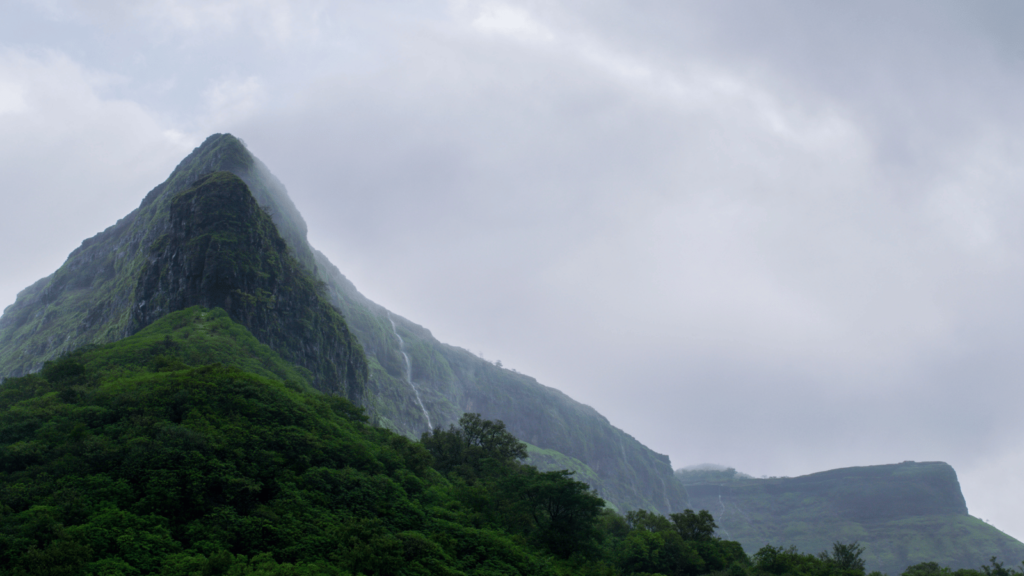
Visapur Fort is a historical hill fort located near Visapur village in Maharashtra, India. It’s part of the iconic Lohagad-Visapur fortification complex, with Lohagad being its twin fort.
Unlike its older counterpart, Lohagad, Visapur Fort was constructed specifically to safeguard Lohagad. It was built between 1713 and 1720 by Balaji Vishwanath, the first Peshwa of the Maratha Empire.
The fort played a crucial role during the Maratha Empire. Its strategic location offered a commanding view of the surrounding areas, making it an important military outpost.
Visapur Fort stands at a higher altitude than Lohagad, offering even more spectacular views.
The fort boasts a large plateau, making it different from many other forts. It also houses caves, water cisterns, and the ruins of what is believed to be a Peshwa’s palace.
Trek Difficulty: Easy
Trek Duration: 1 hour
Opening hours: 24 hours
13.1 km Away from the center
Distance From Lonavala Railway Station: 12.1 km
5. Tung Fort
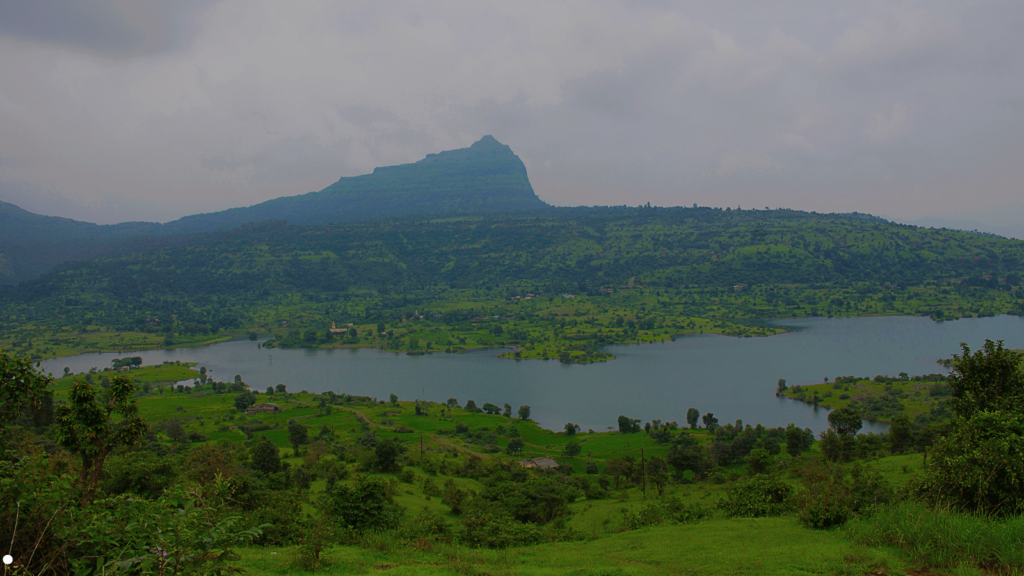
Tung Fort, also known as Kathingad (meaning ‘difficult fort’), is a formidable hill fort situated in Maharashtra, India. Rising to an elevation of 1075 meters, it’s a part of the imposing Western Ghats.
The fort was constructed around 1482-83 during the reign of Raja Bhoj.
Over the centuries, Tung Fort has witnessed the rule of various dynasties including the Marathas, Mughals, and the British.
Notably, Chhatrapati Shivaji Maharaj captured the fort twice, showcasing its strategic importance.
As the name “Kathingad” suggests, the trail of this trek is quite difficult.
Despite its strategic importance, Tung Fort is relatively small and could accommodate only about 200 troops.
Trek Difficulty: Easy to Medium
Trek Duration: 1 hour
Opening hours: 24 hours
23.2 km Away from the center
Distance From Lonavala Railway Station: 22.2 km
6. Tikona Fort
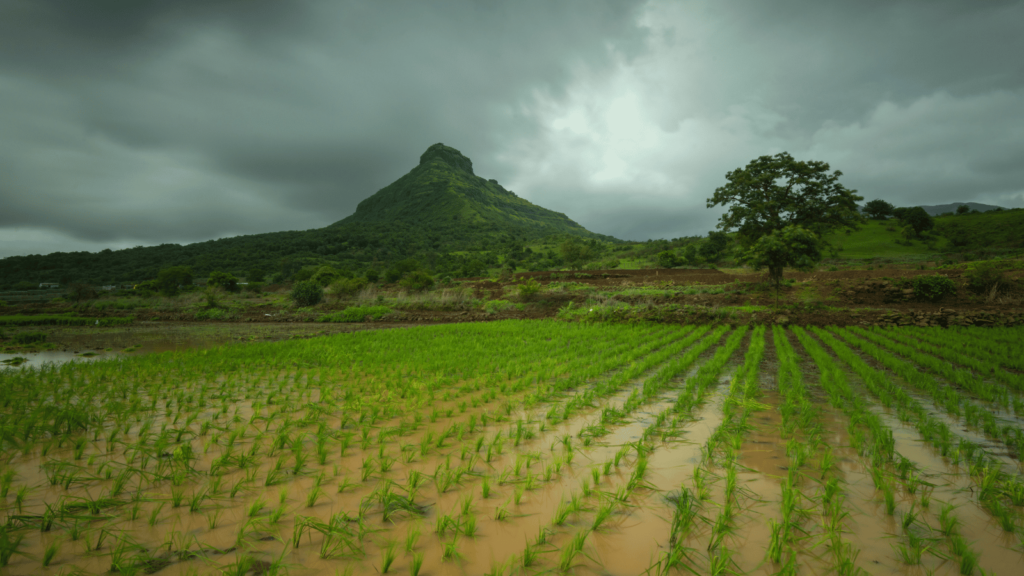
Tikona Fort, also known as Vitandgad Fort, is a historical hill fortress located in the Maval region of Maharashtra, India.
As the name suggests, the fort is distinctively triangular in shape, adding to its unique appeal.
Built during the 17th century under the Maratha Empire, Tikona Fort served as a strategic military outpost.
Its triangular shape and hilltop location provided excellent defense against invaders. The fort played a crucial role in protecting the Maratha kingdom and was a formidable stronghold.
After the decline of the Maratha Empire, the fort lost its strategic importance. During the British Raj, it was even used as a prison for a period.
Trek Difficulty: Easy
Trek Duration: 1-1.30 hours
Opening hours: 24 hours
27.3 km Away from the center
Distance From Lonavala Railway Station: 25.1 km
7. Duke’s Nose
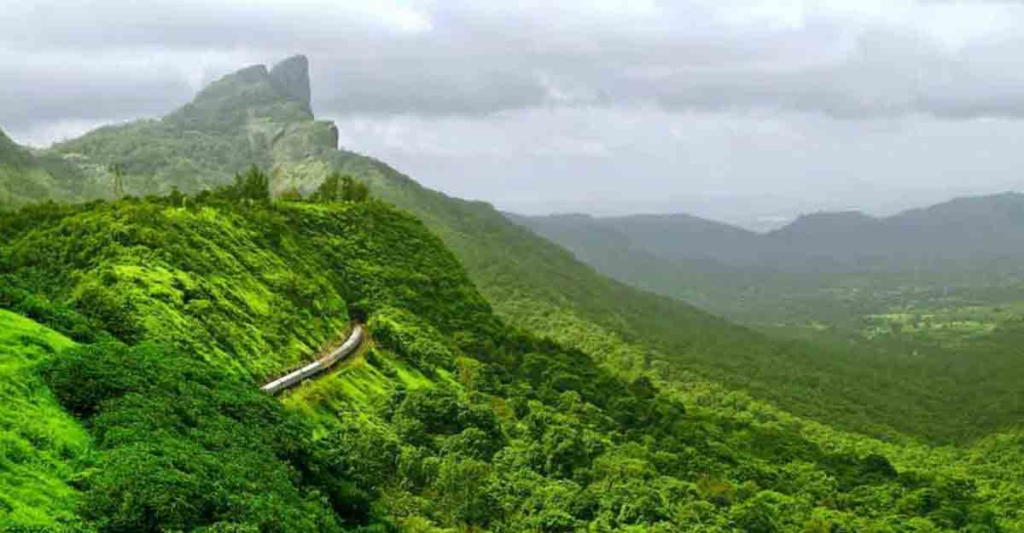
Duke’s Nose is a prominent, pointed rock formation that juts out dramatically from the Western Ghats mountain range, near Lonavala in Maharashtra, India. It’s a popular tourist destination, renowned for its stunning natural beauty and challenging trekking trails.
The name “Duke’s Nose” is believed to have been given by the British during their colonial rule, due to its resemblance to a nose. The formation is a result of millions of years of geological processes, weathering, and erosion. The cliff face is steep and imposing, offering breathtaking views of the surrounding valleys and Sahyadri ranges.
Trek Difficulty: Easy to medium
Trek Duration: 45 minutes
Opening hours: 24 hours
7.7 km Away from the center
Distance From Lonavala Railway Station: 39.1 km
8. Mrug Gad

Mrugagad Fort is a relatively small but enchanting hill fort nestled in the Sahyadri mountain range, Maharashtra, India. Known for its natural beauty rather than its historical significance, it’s a popular spot for trekking and nature enthusiasts.
While not as historically rich as other forts in the region, Mrugagad served primarily as a watchtower. Its strategic location offered a vantage point for surveillance. Due to its natural fortification, extensive man-made defenses were unnecessary.
Due to its challenging yet scenic route, Mrugagad has become one of the popular treks in Lonavala.
Trek Difficulty: Easy
Trek Duration: 2.5 hours
Opening hours: 24 hours
10.7 km Away from the center
Distance From Lonavala Railway Station: 46.3 km
9. Bhaja Caves
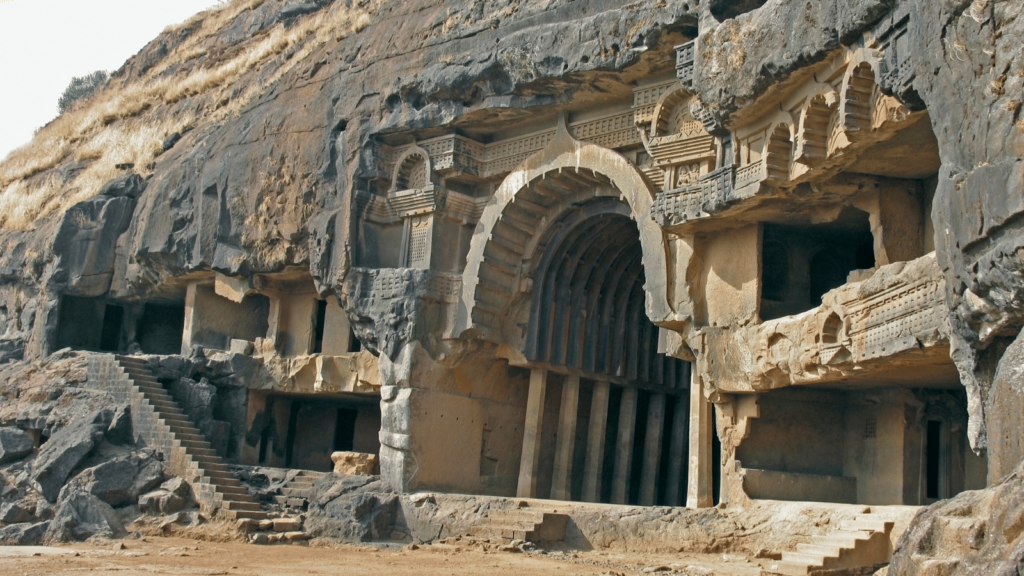
Bhaja Caves are a remarkable collection of rock-cut caves located near Lonavala, Maharashtra, India. These ancient structures offer a fascinating window into the life and culture of early Buddhist monks.
Dating back to the 2nd century BC, the Bhaja Caves are among the earliest examples of Buddhist cave architecture in India. They were carved out of solid rock by skilled artisans, showcasing their exceptional craftsmanship. Over the centuries, these caves served as places of worship, meditation, and communal living for Buddhist monks.
The caves are divided into two main types:
Chaityas: These are prayer halls, featuring a distinctive horseshoe-shaped entrance and a central stupa (a dome-shaped Buddhist shrine).
Viharas: These are monastic dwellings, with multiple cells for monks to live and meditate.
Trek Difficulty: Easy to Medium
Trek Duration: Around an hour
Opening hours: 9 am–6 pm
12.1 km Away from the center
Distance From Lonavala Railway Station: 11.8 km
10. Karla Caves
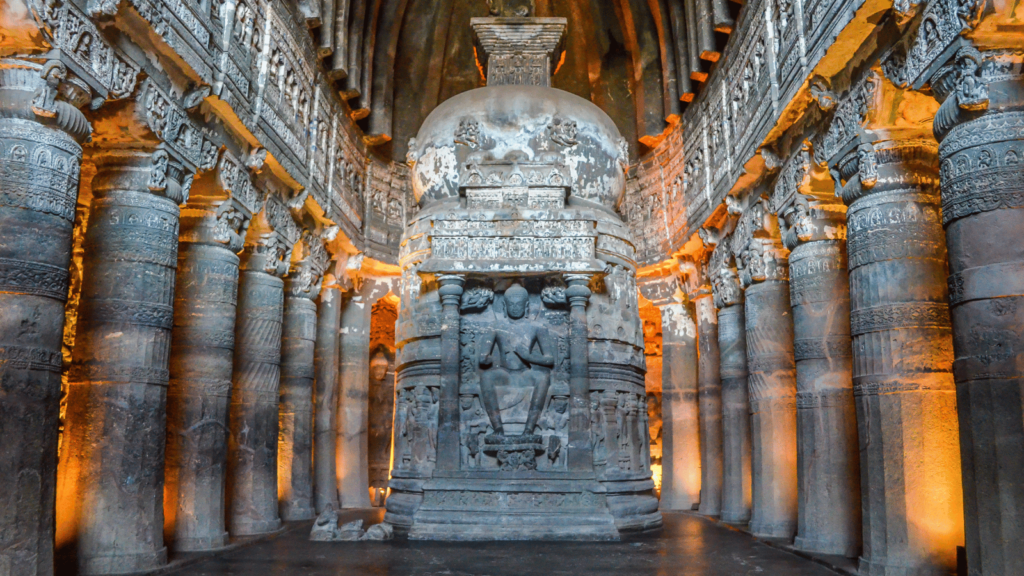
Karla Caves are a magnificent complex of ancient Buddhist rock-cut caves located near Lonavala, Maharashtra. They are among the oldest and largest Buddhist cave shrines in India, dating back to the 2nd century BCE. If you are looking for a easy hike with children and family, then this is for you.
Karla caves is one of the easiest treks in Lonavala.
Karla Caves are located near Famous Ekvira Devi temple in Lonavala.These caves were once a thriving center of Buddhist learning and worship.
The caves are renowned for their intricate carvings, sculptures, and the grand Chaitya hall.
Trek Difficulty: Easy
Trek Duration: 20 minutes
Opening hours: 9 am–5:30 pm
8.9 km Away from the center
Distance From Lonavala Railway Station: 12 km
11. Bedse Caves
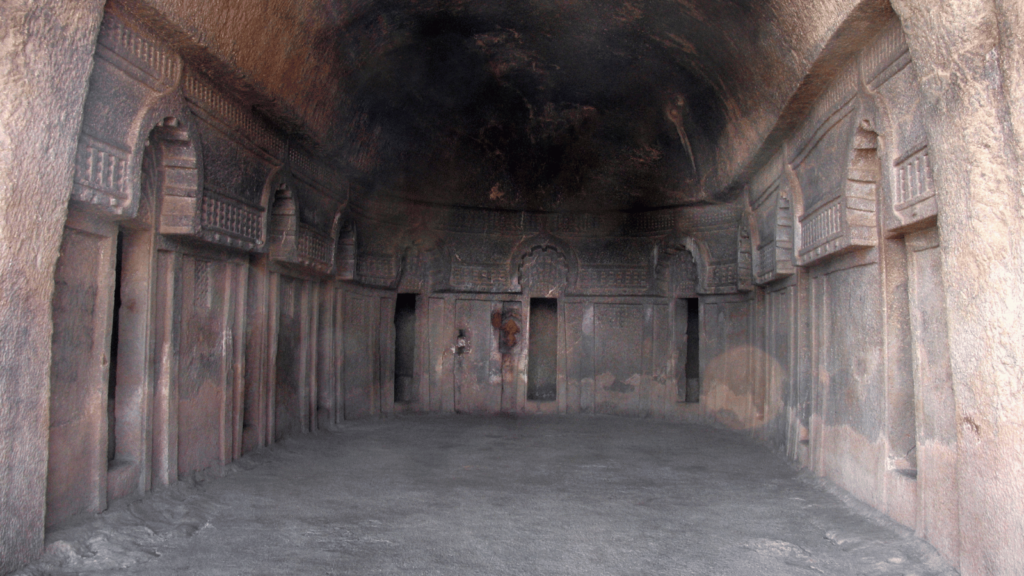
Bedse Caves are ancient Buddhist rock-cut monuments located in Lonavala. They date back to the Satavahana period, making them around 2000 years old!
These caves are among the earliest rock-cut caves in Western India. The caves feature intricate carvings and architectural elements typical of Buddhist cave structures.
Being less crowded than other nearby caves like Karla and Bhaja, Bedse offers a serene atmosphere.
Bedse Caves offer a unique opportunity to delve into India’s rich Buddhist heritage while enjoying the beauty of nature.
Trek Difficulty: Easy
Trek Duration: 30 minutes
Opening hours: 9am- 5 pm/ all days
26.4 km Away from the center
Distance From Lonavala Railway Station: 27.2 km
Let’s go a little further: 6 Stunning Treks Near Lonavala
1. Sarasgad
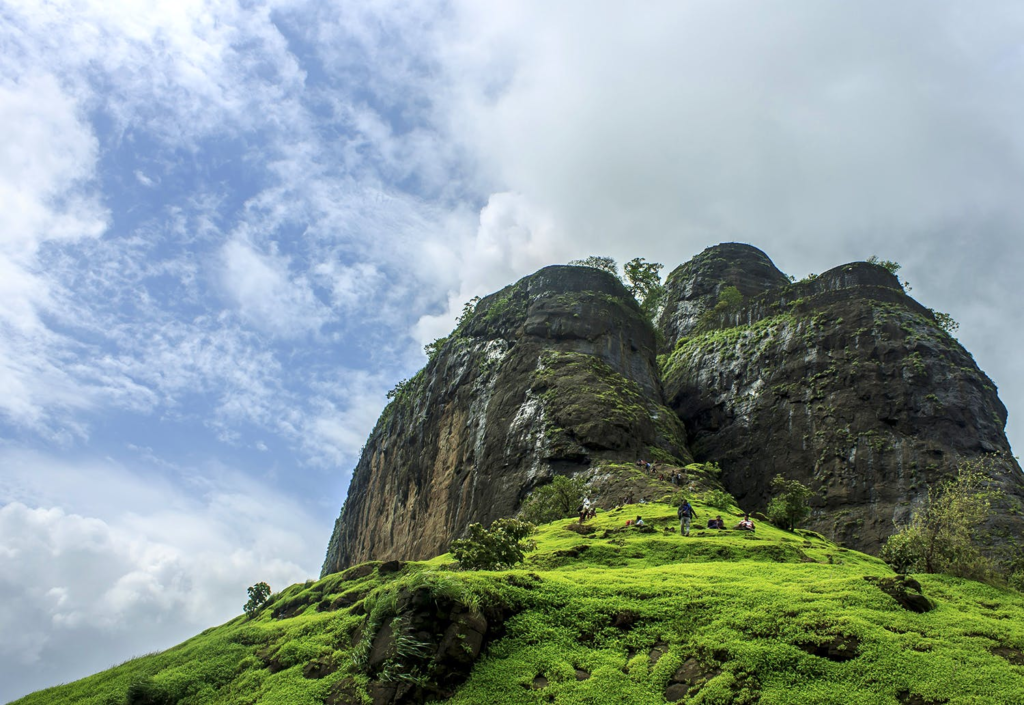
Sarasgad Fort, often referred to as “Pagadicha Killa” due to its shape resembling a Pagadi (turban), is a historic hill fort located in the Pali region of Maharashtra, India.
Sarasgad was initially captured by Malik Ahmad Nizam Shah I during his Konkan campaigns in 1485. Its strategic location made it an important vantage point for controlling the surrounding region.
The fort gained prominence during the reign of Chhatrapati Shivaji Maharaj. Recognizing its strategic importance, Shivaji invested heavily in its fortification, contributing a substantial sum of 2000 hones (gold coins) for repair work. This strengthened Sarasgad’s position as a crucial outpost in the Maratha empire.
Unlike many other forts in the region, Sarasgad remained unconquered by the British. It continued to be under the control of the Bhor princely state until India’s independence.
Despite its rocky terrain, Sarasgad boasts around ten water tanks carved into the rock, ensuring a steady water supply throughout the year.
Trek Difficulty: Medium
Trek Duration: 2-2.5 hours
Opening hours: 24 Hours
54.2 km Away from the center
Distance From Lonavala Railway Station: 53.2 km
2. Sudhagad
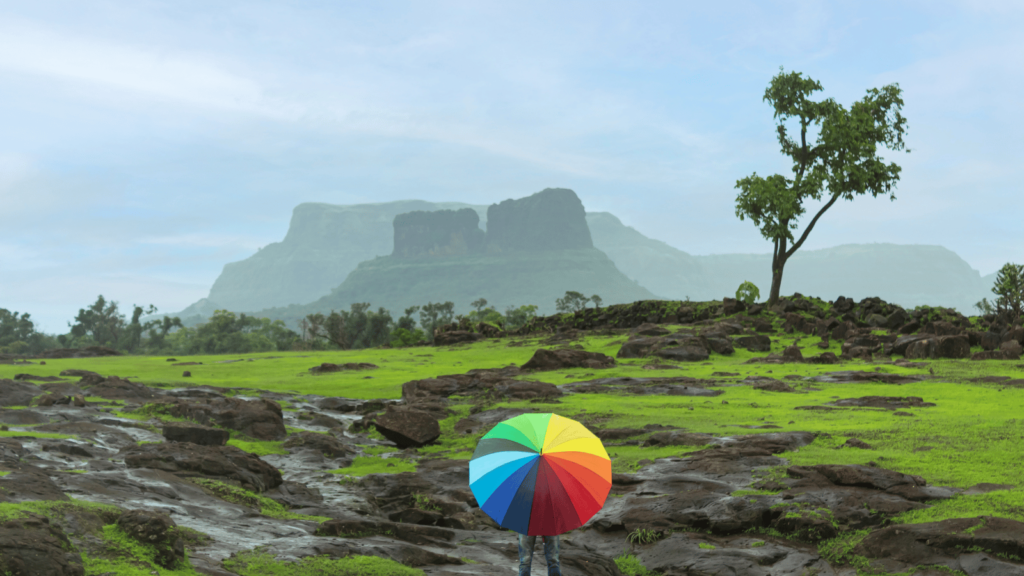
Sudhagad Fort, also known as Bhorapgad, is a majestic hill fort nestled in the Pali district of Maharashtra, India. Its history is as rich as its architecture. This is one of the greatest treks in Lonavala that lets you live through the history.
The fort’s roots trace back to the 2nd century BC, making it contemporary to the renowned Thanale and Khadsamble caves. Initially named Bhorapgad after its presiding deity, Bhoraidevi, it was a significant religious and strategic site.
In 1436, the Bahmani Sultanate conquered the fort, marking a change in its governance.
Dedicated to the fort’s patron goddess, the temple of Bhoraidevi is well-preserved and holds religious significance.
The fort boasts two artificial lakes, a marvel of ancient engineering.
The fort’s summit offers breathtaking vistas of the surrounding landscape, including other forts like Sarasgad, Korigad, Ghangad, and Taila-Baila.
Trek Difficulty: Easy
Trek Duration: 2-2.5 hours
Opening hours: 24 Hours
66.8 km Away from the center
Distance From Lonavala Railway Station: 64.4 km
3. Ghangad

Ghangad Fort is a historical fortress nestled amidst the Sahyadri Mountains near Lonavala, Maharashtra, India. It’s one of the popular treks in Lonavala, offering stunning views of the surrounding landscape.
While the fort is estimated to be around 300 years old, its exact history remains shrouded in mystery. However, its strategic location suggests its importance in the past.
Ghangad primarily served as a watchtower to keep an eye on the trade route connecting Konkan to Pune. Its commanding position offered excellent visibility over the region. Additionally, it was used to house prisoners.
The fort was under the Maratha Empire until 1818 when it surrendered to the British forces following the fall of Korigad.
The fort’s distinctive trapezoidal shape is a striking feature. The name ‘Ghangad’ itself means ‘solid fort’ in Marathi, aptly describing its structure.
Trek Difficulty: Easy to Medium
Trek Duration: 1.5 hrs
Opening hours: 24 Hours
34.9 km Away from the center
Distance From Lonavala Railway Station: 33.3 km
4. Kailasgad
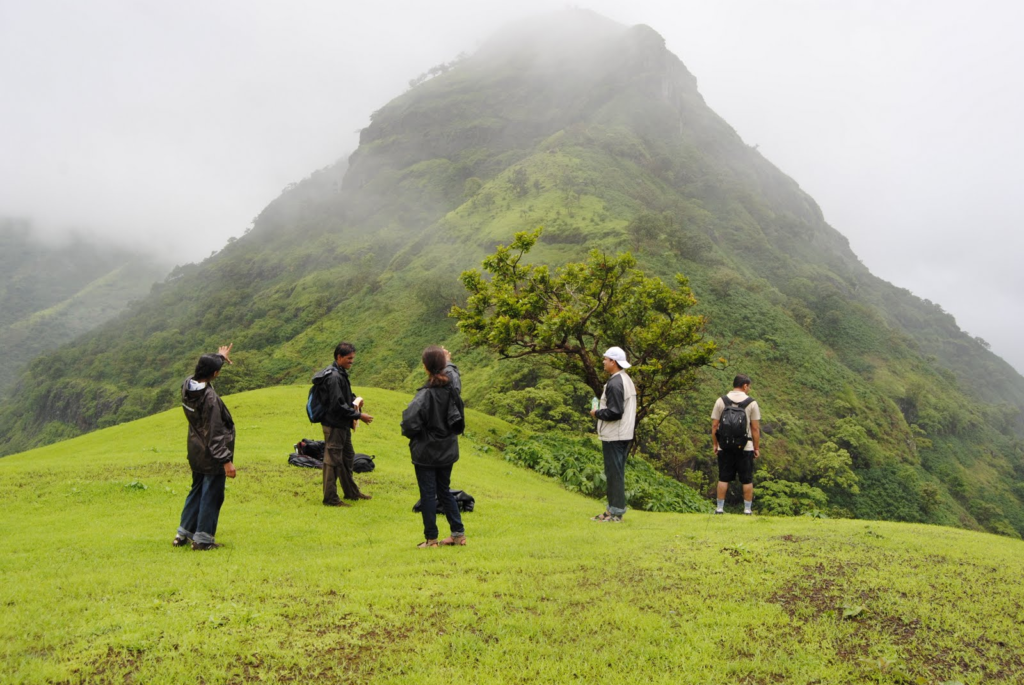
Kailasgad Fort is a captivating historical site nestled amidst the Sahyadri Mountains. It is one of the hidden yet scenic treks in Lonavala that not many people know of. While it boasts stunning natural beauty and offers a challenging trek, its historical records are somewhat obscure.
The fort’s history stretches back to the early centuries, a period marked by the rise and fall of various dynasties. It’s believed to have been a strategic stronghold, guarding the region from invaders.
Water reservoirs on this fort ensured a steady water supply, crucial for survival during sieges.
Today, Kailasgad offers a challenging yet rewarding trek for adventure enthusiasts. The fort’s natural surroundings, coupled with its historical aura, make it a popular destination.
Trek Difficulty: Moderate
Trek Duration: 2 hours
Opening hours: 24 Hours
50.1 km Away from the center
Distance From Lonavala Railway Station: 49.1 km
5. Tail Baila

Tail Baila is one of the remarkable treks in Lonavala that adventure enthusiasts should not miss. This trek offers a moderate level of difficulty, making it accessible to a wide range of hikers. With a trek duration of approximately 2 hours, it provides ample opportunity to explore the scenic beauty of the area. Located around 50.1 km away from the center, Tail Baila is a perfect choice for those seeking a thrilling outdoor experience.
Tail Baila is more accurately described as a unique geological formation rather than a fort. While it’s often referred to as a fort due to its imposing appearance, there’s limited historical evidence to support this classification.
Located in the Lonavala region of Maharashtra, India, Tail Baila is characterized by two massive walls of rock, rising about 200-250 feet high. These walls are the result of a geological process known as a magmatic dyke, where molten rock forced its way through cracks in the earth’s crust and solidified.
Despite its lack of historical significance as a fort, Tail Baila has become a popular destination for trekking, rock climbing, and rappelling enthusiasts. The unique rock formations offer a challenging yet rewarding experience for adventure seekers.
Trek Difficulty: Easy
Trek Duration: 30 minutes
Opening hours: 24 Hours
32.6 km Away from the center
Distance From Lonavala Railway Station: 31.6 km
6. Thanale/ Nadsur Buddhist Caves
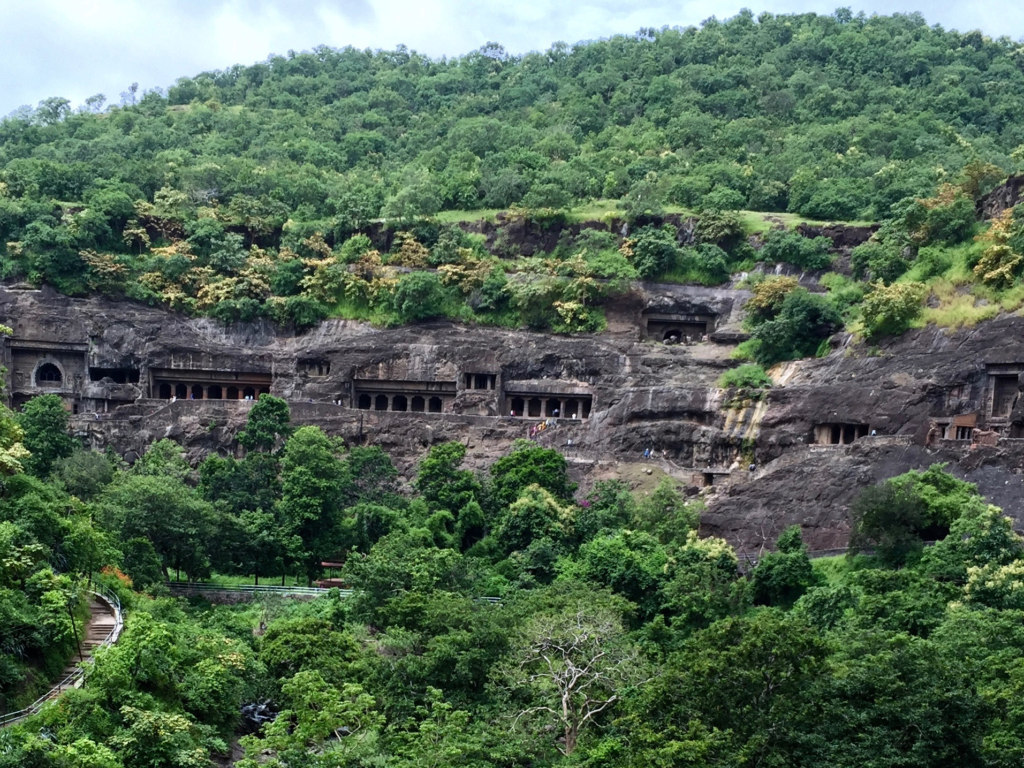
Thanale Caves, also known as Nadsur Caves, are a remarkable collection of 23 Buddhist caves nestled in the Western Ghats of Maharashtra, India. These ancient structures offer a fascinating window into India’s rich Buddhist heritage.
Believed to date back to the 1st century BC, these caves are among the earliest rock-cut caves in India. Their architectural style and inscriptions provide invaluable insights into early Buddhist monastic life and practices.
Situated along an ancient trade route connecting the inland regions with the coastal port of Chaul, the caves were strategically located for Buddhist monks and traders alike.
The caves exhibit a blend of Buddhist and Hindu architectural elements. They include chaityas (prayer halls), stupas (relic mounds), and viharas (monasteries), showcasing the intricate craftsmanship of the period.
Trek Difficulty: Medium
Trek Duration: 3 hours to explore caves
Opening hours: 24 Hours
49.4 km Away from the center
Distance From Lonavala Railway Station: 31.1 km
Final Words
Thank you for reading about the 17 Outstanding Treks in Lonavala. These treks offer a unique opportunity to explore the ancient rock-cut caves, believed to date back to the 1st century BC.
With their blend of Buddhist and Hindu architectural elements, including chaityas, stupas, and viharas, these caves provide invaluable insights into early Buddhist monastic life. Strategically located along an ancient trade route, these caves were accessible to both Buddhist monks and traders.
The trek to these caves is of medium difficulty and takes approximately 3 hours to explore.
The caves are open 24 hours a day and are located 49.4 km away from the center of Lonavala, with a distance of 31.1 km from the Lonavala Railway Station.

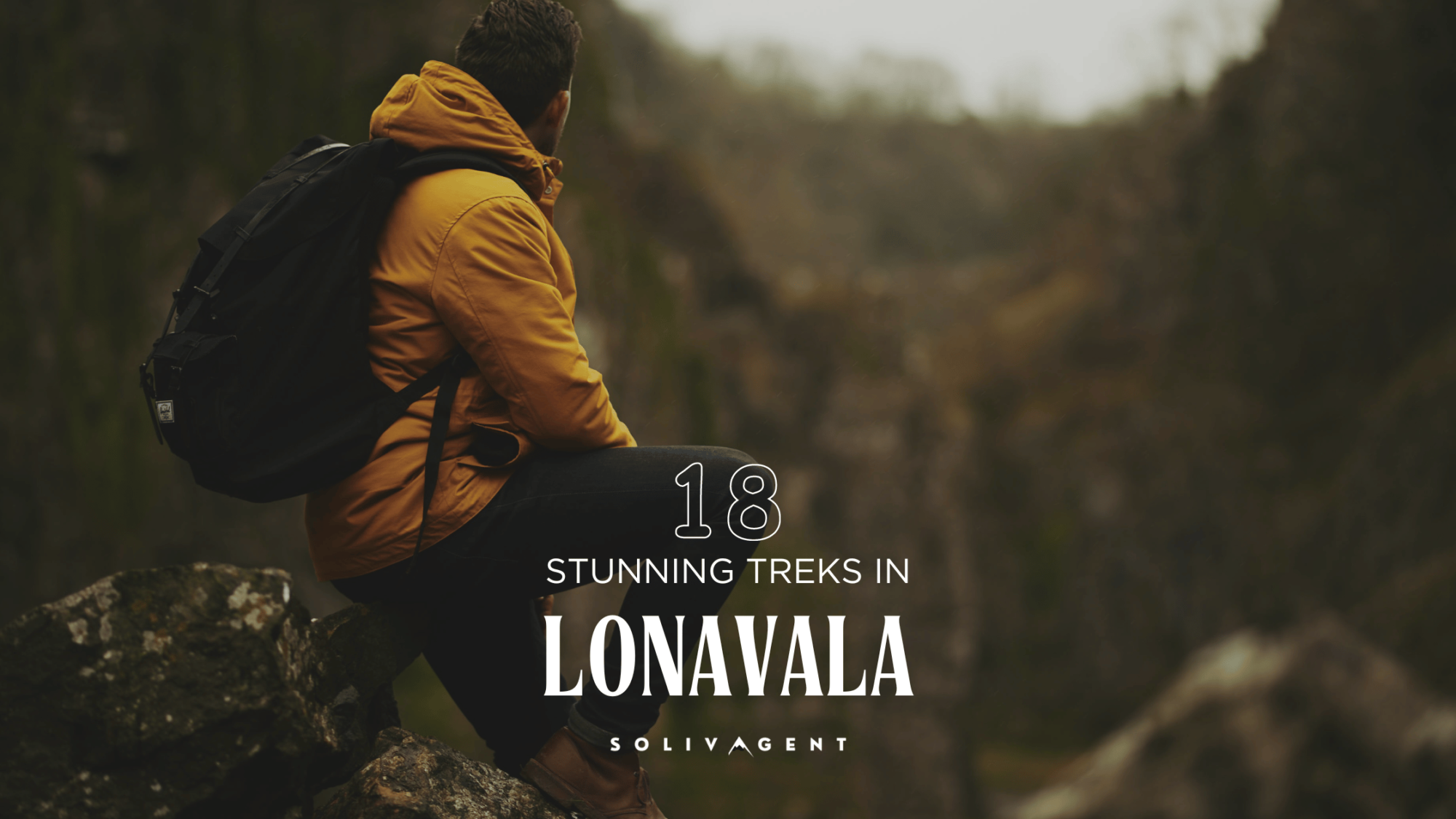
Business dicker I like the efforts you have put in this, regards for all the great content.
Thank you!
Your blog is a constant source of inspiration for me. Your passion for your subject matter is palpable, and it’s clear that you pour your heart and soul into every post. Keep up the incredible work!
Techno rozen Hi there to all, for the reason that I am genuinely keen of reading this website’s post to be updated on a regular basis. It carries pleasant stuff.
Your blog is a testament to your passion for your subject matter. Your enthusiasm is infectious, and it’s clear that you put your heart and soul into every post. Keep up the fantastic work!
You have brought up a very wonderful points, regards for the post.
Puraburn I very delighted to find this internet site on bing, just what I was searching for as well saved to fav